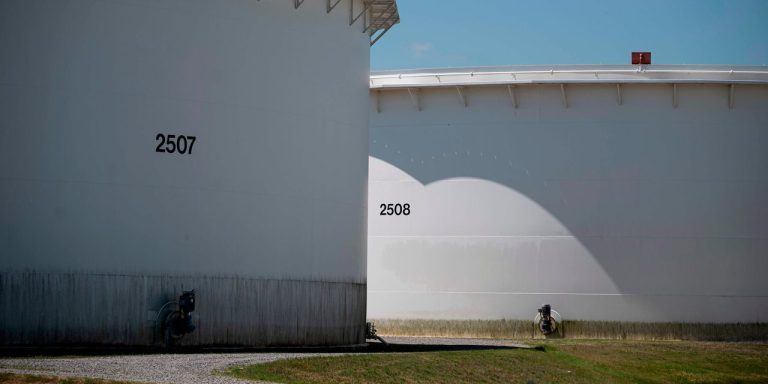Oil futures rose Wednesday, with the U.S. benchmark posting its highest finish of 2023, buoyed by continued concerns over supplies that have been amplified by the latest turn in the war between Russia and Ukraine.
Data showing a drop in U.S. fuel inventories also provided support, offsetting a rise in crude stocks.
Price action
-
West Texas Intermediate crude for September delivery
CL00,
+0.06% CL.1,
+0.06% CLU23,
+0.06%
rose $1.48, or 1.8%, to finish at $84.40 a barrel on the New York Mercantile Exchange. That was the highest close for the U.S. benchmark since Nov. 16. -
October Brent crude
BRN00,
-0.08% BRNV23,
-0.08% ,
the global benchmark, rose $1.38, or 1.6%, to settle at $87.55 a barrel on ICE Futures Europe, its highest close since Jan. 23. -
Back on Nymex, September gasoline
RBU23,
-0.12%
rose 2.9% to close at $2.928 a gallon, while September heating oil
HOU23,
-0.12%
jumped 3.9% to $3.207 a gallon. -
September natural gas
NGU23,
+0.80%
rallied 6.6% to close at $2.959 per million British thermal units.
Market drivers
The Energy Information Administration on Wednesday said U.S. crude inventories rose by 5.9 million barrels in the week ended Aug. 4, but gasoline inventories dropped by 2.7 million barrels and stocks of distillates, which include heating oil and diesel fuel, declined by 1.7 million barrels.
Analysts surveyed by S&P Global Commodity Insights, on average, had forecast a 930,000 barrel drop in crude inventories last week. Gasoline stocks were forecast down 1.1 million barrels, with distillates unchanged.
Crude-oil futures initially came off early highs following the data, but “other aspects of the report were strong as the refinery utilization rate increased sharply and stocks of oil products dropped,” said Fawad Razaqzada, market analyst at City Index and Forex.com, in a note.
The American Petroleum Institute, an industry trade group, said late Tuesday that U.S. crude inventories rose by 4.1 million barrels last week, according to a source citing the data, while gasoline and distillate inventories fell.
Tighter supply, driven in particular by voluntary cuts by Saudi Arabia and Russia, has been credited with lifting crude prices over the past six weeks.
WTI’s break on Wednesday above the April high means that traders who were skeptical of OPEC+’s efforts have been proven wrong, Razaqzada said.
“As more bearish speculators now step aside, oil prices should continue trending higher for as long as there are no major demand worries. So, a move up to $85 looks increasingly likely from here,” he wrote, but cautioned that a dip in the short term wouldn’t be a surprise as futures are “clearly overbought.”
Gains for natural gas, meanwhile, were tied to falling production and the possibility of worker strikes at some liquefied natural gas, or LNG, export plants in Australia, potentially creating supply shortages in the global LNG market, said Victoria Dircksen, commodity analyst at Schneider Electric, in a note.
Read the full article here









